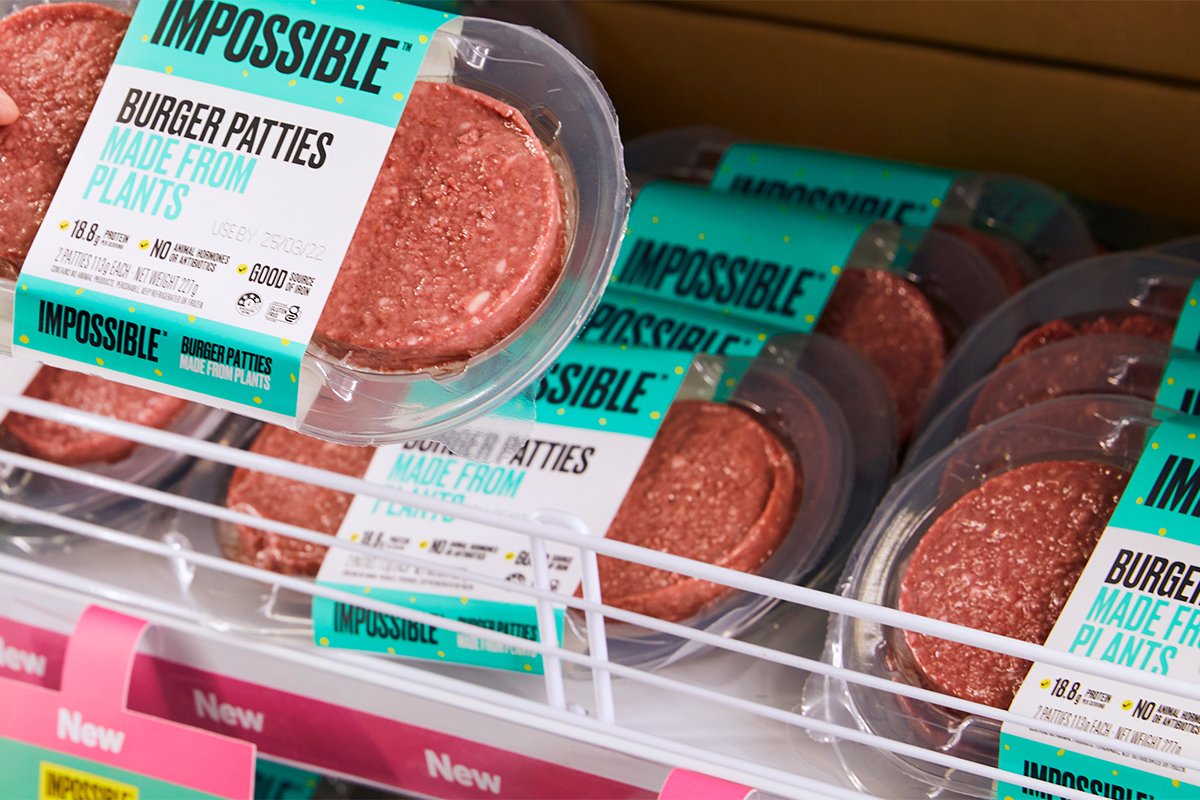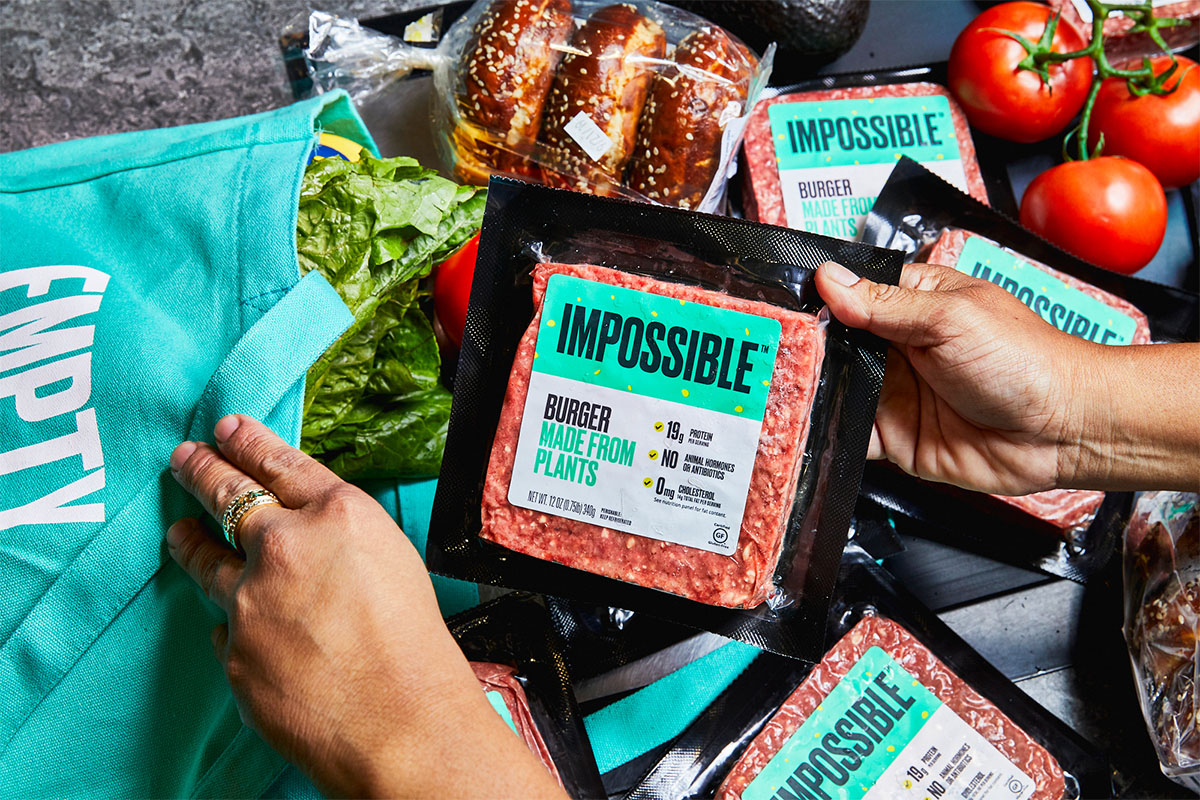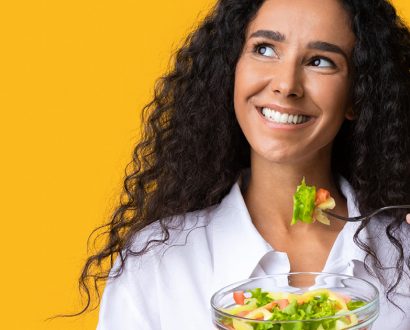Meat has been a dietary staple for as long as humans have been roaming this Earth. Google just about any seasoned chef and you’ll find their recipes almost always revolve around seafood, chicken or lamb.
The question is how can we continue to enjoy the texture, flavour and heartiness of meat without impacting the planet?
For Nick Halla, Senior Vice President of International at Impossible Foods, the answer is obvious – switch to plant-based alternatives that are indistinguishable from animal meat.
“Our plan is to produce a full range of meat and dairy products for every region in the world,” he says. “More and more, meat eaters are looking for ways to enjoy the meat-forward dishes they know and love, but with far less impact on their health and the environment.”
With its products on the shelves of almost 25,000 supermarkets across Hong Kong, Macau, Singapore, Canada, the UAE, Australia and New Zealand, clearly Impossible Foods is doing something right – or perhaps something entirely different.
“Our products have the versatility to be used in everything from pizza and tacos to dumplings and meatballs, and each market has its own unique take on how to use Impossible products in their cuisine and traditions,” Halla explains.
It was in his final year of graduate school at Stanford University that Halla became acquainted with Patrick Brown, a Professor of Biochemistry, who introduced him to the idea of developing a technology capable of out-competing animals in the food chain.
“I was shocked to learn what an enormous impact animal agriculture has on the planet – it uses close to 45 per cent of the global land surface, produces more greenhouse gases than all the transportation systems combined, uses more than 25 per cent of the fresh water used each year, and is by far the biggest driver of water pollution, species loss, and land degradation,” Halla says.
With a background in sustainable technologies, farming and commercial food development, Halla seized the opportunity around 10 years ago to transform the global food system by becoming Impossible’s first employee.
“I realised that the impact I could have working with Pat in creating Impossible Foods could be so much greater than if I just went to work at another solar company,” he recalls.
With technology driving the company’s goal of offering a better alternative to its meat counterparts in every market around the globe, Halla and Brown – Founder and CEO of Impossible Foods – are challenging the notion that meat must come exclusively from animals.
“Our food tech platform enables us to understand and reverse-engineer many animal products from plants, and we already have work underway in nearly every major product category,” Halla says.
Designed to be scaled and overcome many of the challenges that the meat industry faces from dealing with live animals, the technology of Impossible Foods is designing and bringing next-generation products to global consumers.
As a result, the business is not only the fastest-growing plant-based company, according to Halla, but it’s also backed by celebrity investors, including Serena Williams, Katy Perry and Bill Gates.
“Three of the products we’ve released in the last year actually out-performed the animal versions in consumer taste tests,” Halla recalls.
“I realised that the impact I could have working with Pat in creating Impossible Foods could be so much greater than if I just went to work at another solar company.” – Nick Halla
The star ingredient that is helping the company to achieve the impossible is heme – the iron- containing molecule that makes meat so appealing to us.
However, producing heme sustainably at scale wasn’t the easiest process. “At first, we tried extracting it directly from soybean root nodules, but we quickly discovered that we needed a more scalable process for producing it,” Halla reflects.
In the end, proprietary technology proved to be the ideal solution for manufacturing heme in large quantities with less impact on the environment.
“This approach allows us to produce a lot of heme with an extremely small environmental footprint, using a tiny fraction of the land, water and resources that would be required to produce heme from farming individual soybean plants,” he says.
However, Halla also attributes the company’s success to the rigorous research that was initially undertaken.
“We hired a robust R&D team early on and devoted the first five years of our business to pure research and development, understanding how meat behaves at the molecular level and how to re-create that experience with plant ingredients,” he explains.
Thanks to investing in this kind of innovation, consumers in some of the world’s highest meat-consuming countries – notably Australia and New Zealand – have taken to Impossible beef, pork, sausage and chicken, which can be adapted to just about any type of cuisine and cultural food preference.
Currently, Impossible beef is available in about 800 Woolworths stores in Australia and 200 Countdown supermarkets in New Zealand.

Interestingly, while Impossible Foods’ core audience are meat enthusiasts, many haven’t necessarily converted to veganism or a vegetarian diet.
“Our products are largely being purchased by meat eaters, not vegans or vegetarians, which shows that meat lovers are making the choice to at least supplement their diets with meat alternatives.”
For Halla, making the switch to plant-based products does more than enable a more sustainable and healthier food system.
“In a carbon market, where carbon is priced at US$50 per ton of CO2, farmers have an opportunity to make more money than they do today by facilitating landscape restoration and biomass recovery on their land instead of using it to raise livestock,” he explains.
Halla himself grew up on a farm, which he believes is not at all dissimilar to developing a startup where everyone is contributing with very little resources. “Farming also taught me a lot about business because it’s a very direct form of entrepreneurship,” he says.
“You have to do everything with very little money, which teaches you a lot of creativity, resourcefulness and determination,” Halla reflects. “Similarly, when we first started Impossible Foods, we had to be scrappy and find super-creative ways to problem-solve on the way to developing our first prototype.”
Read next: The global food trends that are transforming our world







